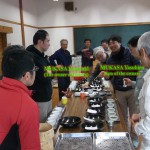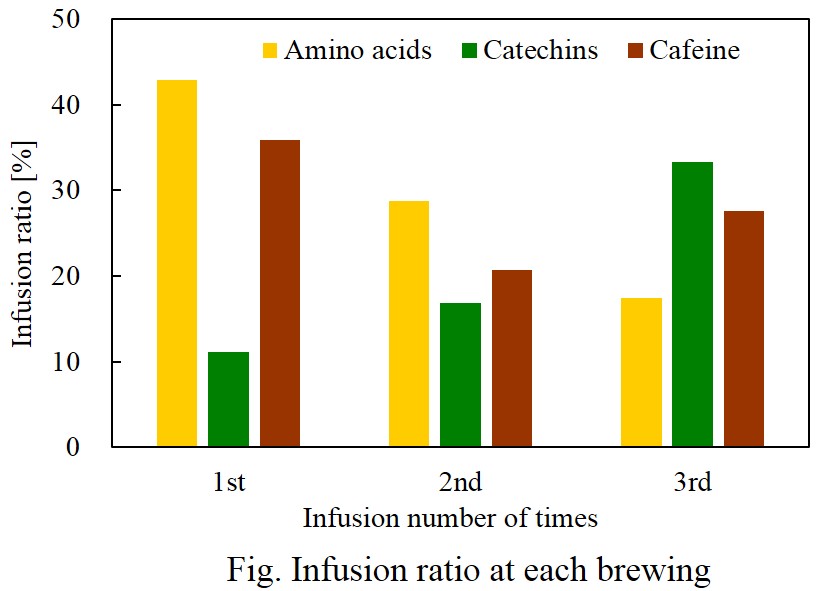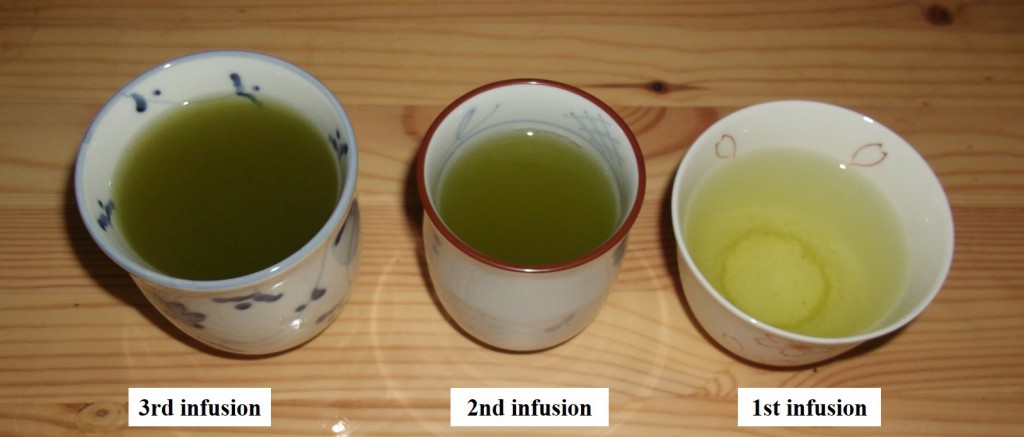Based on the Tea Council of the USA, January 12th is recognized as “National Hot Tea Day” in USA., suggesting that the coldest month makes us to be eager to drink hot tea.
Hot teas provide us warmness, soothing sense of relief, power to live, comfortable time with family and loved one, especially in cold days. In the bedtime scene, a nightcap tea invites us smoothly to a comfortable dream.
In general, it is recommended to brew Japanese green tea at lower temperature, resulting in better taste due to the difference in infusion rate of each constituent determining taste.
At lower temperature, amino acids responsible to umami and delicate taste diffuse faster(*1) than caffeine or catechins, responsible to bitter or astringent taste. This tendency was clarified in the reference[091] described at the end of this post and depicted as follows.
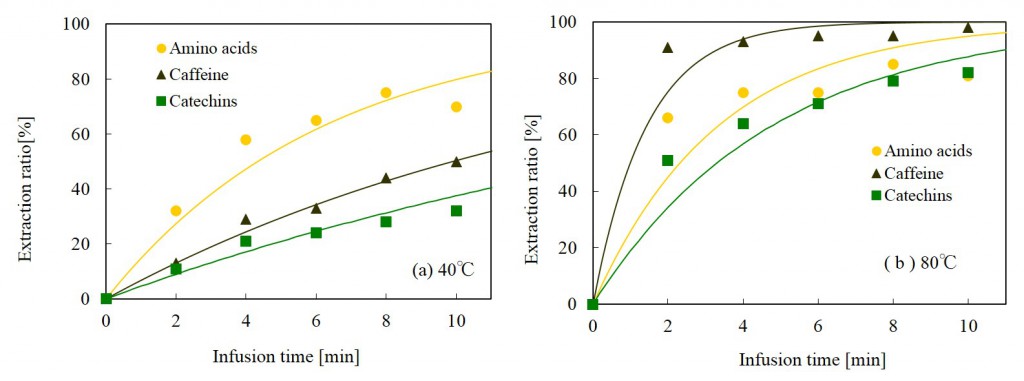
If we brew Japanese green tea at high temperature around 100 degree Celsius, constituents of bitter and astringent taste will be infused more. While we know such fact, nevertheless we would like to enjoy hot green tea of better taste as soon as possible.
Yutaka Koizumi, a past president of the Prefectural Research Center of Tea Industry in Shizuoka, told a nice idea to enjoy umami-rich green tea at higher temperature very easily as shown below.
1) Soaking tea leaves in water for minutes(*2).
Loose leaf tea is soaked in a little amount of water for some minutes.
In this process, amino acids are infused.
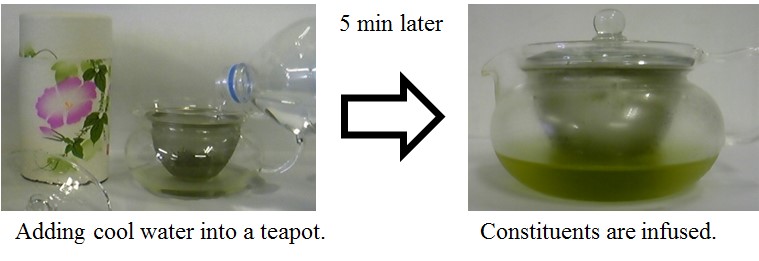
2) Adding hot water
Pour hot water to the tea pot, and then brew tea into tea cups.
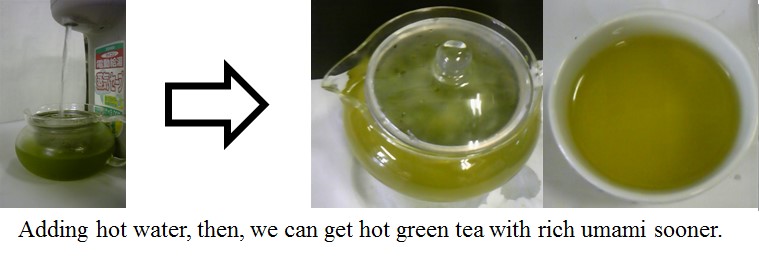
Only two processes will provide better taste tea at warm temperature.
In my personal opinion, this method can be apply to Japanese black tea also.
I hope you will find this method very helpful.
< Note >
(*1) Based on the Fick’s first law and Stokes-Einstein equation, diffusion flux of each constituent increases as molecular size increases.
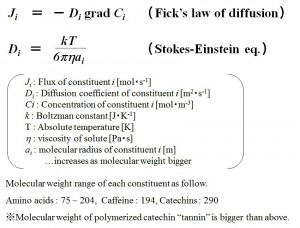
(*2)Soaking time can be extended. I often soak before going to work and pour hot water after coming home. More than 10 hours soak does not result in bitterness and astringency so much. I feel a little bit bitterer and more astringent.
<References>
[091] Ikeda S., Nakagawa M., Iwasa K. (1972) : Relation between Infusing Condition of Green Tea and Soluble Component, Tea Research Journal 37:69-78 (in Japanese).
